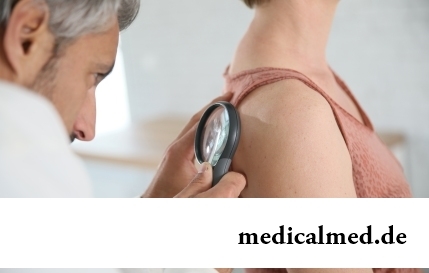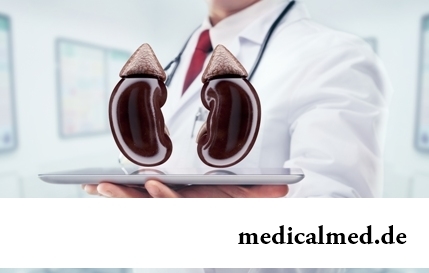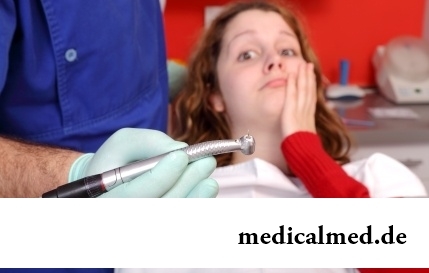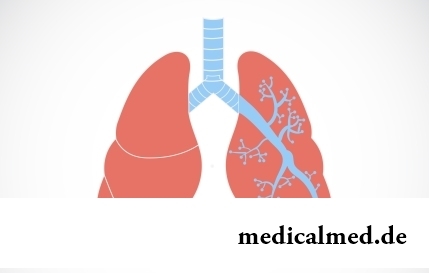





Liver biopsy
 The biopsy of a liver is carried out for definition of a condition of the body which is in process of an inflammation. The procedure is that by a special needle do a puncture of skin, hypodermic fabrics and a liver, take material for a research – a small piece of body (биоптат) about 2 cm long and with a diameter of 1 mm. The received fragment of a liver is transferred to glass and studied under a microscope. Sometimes for diagnosis it is required биоптат the bigger size for what carry out a wedge-shaped biopsy – excise the wedge-shaped site of a liver.
The biopsy of a liver is carried out for definition of a condition of the body which is in process of an inflammation. The procedure is that by a special needle do a puncture of skin, hypodermic fabrics and a liver, take material for a research – a small piece of body (биоптат) about 2 cm long and with a diameter of 1 mm. The received fragment of a liver is transferred to glass and studied under a microscope. Sometimes for diagnosis it is required биоптат the bigger size for what carry out a wedge-shaped biopsy – excise the wedge-shaped site of a liver.
The puncture biopsy of a liver is painful, can cause complications therefore it is not recommended to carry out it often. For this reason there is a selective approach to the diagnostic procedure. Some medical institutions carry out a biopsy to one and all patients infected with hepatitis C, and to some – only by that in whom the virus of a genotype 1 is found: these patients only in 50% of cases successfully recover interferonam (in difference of those who are infected with a virus of genotypes 2 and 3) therefore it is necessary to keep a condition of a liver under control and to timely adjust the therapeutic scheme.
Purpose of a puncture biopsy of a liver to those patients for whom the started disease form since the procedure is traumatic is diagnosed is not considered expedient and can worsen a condition of the patient. Diagnosis and purpose of treatment in this case is carried out by results of biochemical, general blood test, the analysis of a leukocytic formula.
Also there is no need for carrying out a biopsy of a liver after treatment of hepatitis C.
As carry out a puncture biopsy of a liver
Before the procedure the doctor is obliged to inform the patient on how there will pass the biopsy of a liver and what complications can arise in detail. For exact designation of the site for a puncture in certain cases appoint preliminary ultrasonography.
The liver biopsy passes as follows:
- the patient lays down on a back, stuffs up the right hand for the head. During a fence of a bioptat it needs to keep an immovability.
- For ensuring psychological comfort can give to the patient weak sedative.
- The place of a puncture before the procedure is disinfected, anesthetized then do a small cut and enter through it a needle for a biopsy, take away a small fragment of tissue of liver.
After a biopsy of a liver of the patient four more hours have to observe since he can feel discomfort and pain, and anesthetic can be necessary for him. On an extent as eight hours after holding a procedure the patient is not recommended to take the wheel, to be returned to the activity connected with control of difficult mechanisms. Days after a biopsy the patient cannot play sports. For a week after a biopsy of a liver it is impossible to take aspirin and drugs containing acetylsalicylic acid, means against an inflammation: Motrinum, advit, an ibuprofen, Naprosinum, Indocinum.
The complications arising after a biopsy
In spite of the fact that the biopsy of a liver is regarded as small surgical intervention, the probability of development of complications is small – only 1%: during the procedure the accidental puncture of a gall bladder, lungs, a kidney or intestines can be made, the infection can get into an abdominal cavity. Also there are cases of discovery of bleeding from a liver. For treatment perform operation or hemotransfusion. Probability of a lethal outcome after a liver biopsy – 0,1% (one case per thousand).
If in three days after the procedure the increased temperature is observed, nausea, a fever, weakness, trouble breathing, an acute pain in a breast, a liver, a shoulder, a peritoneum will develop, it is necessary to ask for medical care.
Types of a biopsy
Except a puncture biopsy of a liver in certain cases it is possible to carry out a laparoscopic or transvenous biopsy.
 At a laparoscopic biopsy in an abdominal cavity do a section, through it enter a tube with the camera and the doctor, looking at the image which is transferred to the monitor, takes necessary fragments of a liver. Laparoscopic diagnosis is applied when want to study a specific fragment from a certain site of body.
At a laparoscopic biopsy in an abdominal cavity do a section, through it enter a tube with the camera and the doctor, looking at the image which is transferred to the monitor, takes necessary fragments of a liver. Laparoscopic diagnosis is applied when want to study a specific fragment from a certain site of body.
The transvenous biopsy of a liver is carried out when in an abdominal cavity there is a liquid or at the patient blood is badly turned: on a neck enter a catheter with a needle into a vein, advance it on veins to a liver and carry out a material intake.
Results of a biopsy of a liver
For assessment of results of a biopsy there are several ways. The most widespread:
- method Metavir. It is developed for interpretation of results of a biopsy of patients with hepatitis C. During the analysis establish degree and a stage of an inflammation. Depending on degree balls – 0-4 are specified: "0" - there is no inflammation, and balls "3" and "4" – an inflammation heavy. The stage of an inflammation gives the chance to draw a conclusion on scarring and amount of fibrous fabric in a liver. Fibrosis stages are also estimated on a scale 0-4: "0" - there are no hems; "1" - scarring minimum; "2" - scarring is also it went beyond body; "3" - the extending bridge-like fibrosis (the sites affected with fibrosis connect among themselves); "4" - deep scarring or cirrhosis.
- Method Knodel. By results of a biopsy four separate balls which are united in a uniform index are appropriated. The first component of an indicator indicates a bridge-like and periportal necrosis, it is measured on a scale 0-10. Two more components of an index displaying a portal inflammation and a necrosis of hepatic lobes change within 0-4. The combination of these indicators displays liver inflammation degree: "0" – there is no inflammation; "1-4" - the inflammation is minimum; "5-8" - an inflammation small; "9-12" - the inflammation is moderate; "13-18" - the inflammation is considerable. The fourth last component displays extent of scarring of body within 0-4 (there are no "0" hems – "4" cirrhosis and extensive scarring).
There are very curious medical syndromes, for example, persuasive swallowing objects. In a stomach of one patient suffering from this mania 2500 foreign objects were revealed.

Scientists have no unambiguous opinion on a proximate cause of emergence of a carcinoma cutaneum today. Are precisely established only фа...
Section: Articles about health
There is a lot of fans of beer in our country. Statistically, on each average Russian (including women and children) in a year about 60 liters of this drink are consumed. It is not a lot of, as in the Czech Republic or Germany, but figure all the same impressive. Radova...
Section: Articles about health
Kidneys perform the most important function of clarification of blood from those products of metabolic processes which cannot be used by an organism for obtaining energy and construction of new cells. With the urine produced by kidneys from a body of the person the bulk of the toxins getting to it with food and water is removed. Normal functioning of kidneys provides removal from an organism of excess liquid and maintenance of optimum ionic balance. At emergence of failures in work of secretory system...
Section: Articles about health
Climax - process of fading of reproductive function of an organism in process of its aging. At women the main sign of its approach showing...
Section: Articles about health
The main role in development of a peptic ulcer of a stomach and duodenum the bacterium Helikobakter plays pilor. Activity and the strengthened reproduction of this microorganism lead to weakening of protection of mucous membranes and their erosive damage. Manifestations not...
Section: Articles about health
Practically each person is familiar with the annoying, pulling, unscrewing pains caused by overcooling of muscles of a back. In certain cases inflammatory process is not limited to discomfort, being followed by emergence of hypostasis, consolidations, temperature increase. At the wrong treatment the acute miositis can lead to a chronic disease or aggravation of other pathologies of a back (vertebral hernia, osteochondrosis) therefore it is important to pay attention to symptoms of an illness in time and to start to...
Section: Articles about health
Small appetite at the child – the complaint which pediatricians should hear practically from each mother. Most often it is carried to разр...
Section: Articles about health
Such trouble as the milkwoman's attack, at least once in life happened almost to each woman. Prevalence of a disease is explained by the fact that the causative agent of an illness belongs to the so-called opportunistic microflora living on mucous an obol...
Section: Articles about health
Very often as a source of the infection which caused a disease serves our house - the place which a priori has to be safe. However disease-producing bacteria can perfectly feel not only in insanitary conditions, but also in our apartment if not to carry out due care of favourite places of their dwelling. What they − sources of their reproduction? Let's consider 10 most widespread places in our house, the most dangerous from the point of view of infection with microorganisms....
Section: Articles about health
Statistically, can only one of ten of our compatriots brag of a decent condition of an oral cavity. On среднестатистич...
Section: Articles about health
Aging — natural and inevitable process. Over time our skin loses elasticity, on it saggings are formed, the face form loses former clearness. The procedure of nitevy lifting (nitevy tightening) can successfully solve this problem. In order that it is better познако...
Section: Articles about health
At this plant there are a lot of names: tuberiferous sunflower, Jerusalem artichoke, solar root, earth pear. Contrary to popular belief, it is not an exotic plant at all. The wild girasol grows in a midland of Russia practically everywhere: at the edges of roads, to slopes of ravines, on heathlands. Also several cultural versions different from wild plants are removed by larger and juicy root crops....
Section: Articles about health
They say that to ensure health and longevity of people it is obliged. Really, at competent approach to these questions, we will pass...
Section: Articles about health
What is in our understanding weeds? It plants which are considered to be suitable only for compost pits and feeding of animals. Meanwhile, among the weeds growing literally under legs it is possible to find the mass of the officinal herbs possessing invaluable Paul...
Section: Articles about health
Use of medicinal plants in therapy is urgent today, more than ever. The drugs made of curative herbs cannot replace completely modern synthetic drugs, but their use becomes frequent serious help in simplification of a course of many illnesses and improvement of quality of life of chronic patients....
Section: Articles about health
Coffee - the tonic loved by many for the invigorating aroma and deep taste. Having the stimulating effect, coffee raises ра...
Section: Articles about health
With age in a human body harmful substances collect. We receive them with food and water, at inhalation of the contaminated air, reception of medicines, use of household chemicals and cosmetics. A considerable part of toxins accumulates in a liver, osnovno...
Section: Articles about health
Season of activity of viral infections in the heat. Everyone can get sick, but probability of this unpleasant event it is possible and it is necessary to minimize. There is a number of rules, following to which will help or to avoid absolutely infection with flu or a SARS, or to have an illness benign and without essential complications. About ways of prevention of seasonal infections the speech in this article will also go....
Section: Articles about health
It is pleasant to state a possibility of improvement of quality of life of people with problems of functioning of secretory system. By efforts that...
Section: Articles about health
Quite large number of people adheres to the principles of vegetarian food. But how to be if in a family of vegetarians there are children? Whether it is possible to eat also it the same as to parents, or after all the children's organism is not adapted for the use only раст...
Section: Articles about health
We present to yours the TOP of the medicamentous means exerting the stimulating impact on a potentiality, i.e. on ability of the man to commission of sexual intercourse. At once it is necessary to tell that not always disturbances of erectile function can be eliminated with reception of this or that drug. The reasons of decrease in a potentiality there can be a set, from banal overfatigue before tumoral process in a small basin therefore if the man faces similar problems too often, it should turn...
Section: Articles about health
Herpes simplex of the first type (the infectious disease which is shown periodic bubble rashes on is called...
Section: Articles about health
The kid who was recently born is surrounded with love of adult family members and their cares without which the baby cannot exist. Some parents consider that gentle attachment and caress are quite enough that the child correctly developed and was happy...
Section: Articles about health
You are office worker, the driver, the fan of winter sports or do not think of life without bicycle? You lead a slow-moving life and you move on the city only on the car? You have no constant partner and you do not love the protected sex? Attention! You unambiguously are a potential target for prostatitis. It is not necessary to panic, it is necessary to work....
Section: Articles about health
It would seem, about it there can be no disagreements: water is necessary for a human body for normal zhiznedeyatet...
Section: Articles about health
Each person supports all life a SARS about 200 times. The peak of incidence falls on cold season, but it is possible to get sick with a temperature and a pharyngalgia, and sometimes and very possibly, even during a heat. The reasons for development of catarrhal diseases exists множество:...
Section: Articles about health
New year, wedding, birthday, office party – an occasion to drink at the Russian person will always be. How to reduce a negative impact of alcohol by an organism and to avoid a condition of strong intoxication? The most correct council – to refuse the use of alcoholic drinks. Council is true, but not always feasible. We offer several advice which will help you in cases when it is impossible to avoid alcohol intake....
Section: Articles about health
